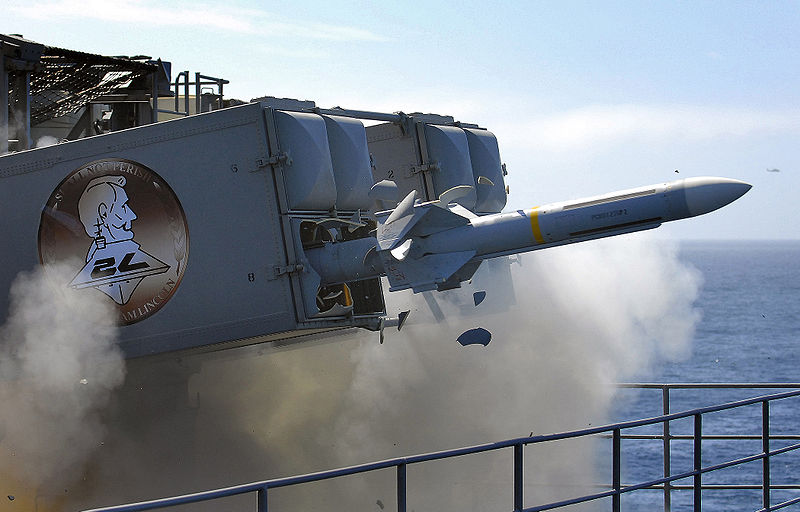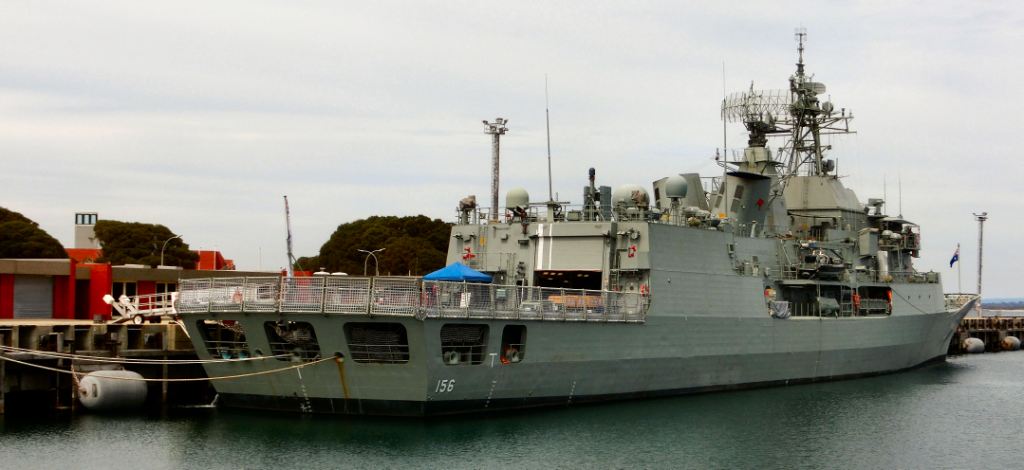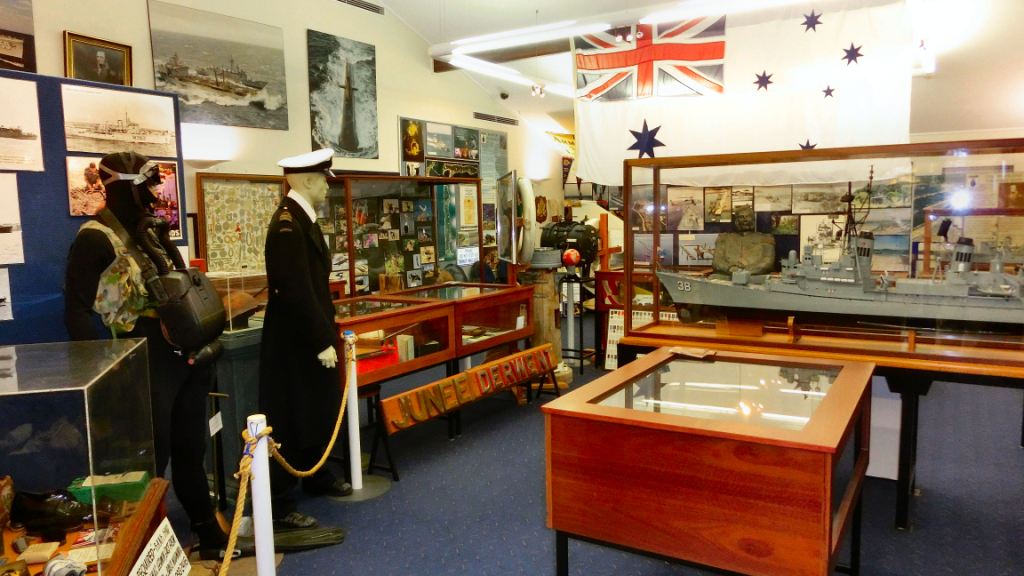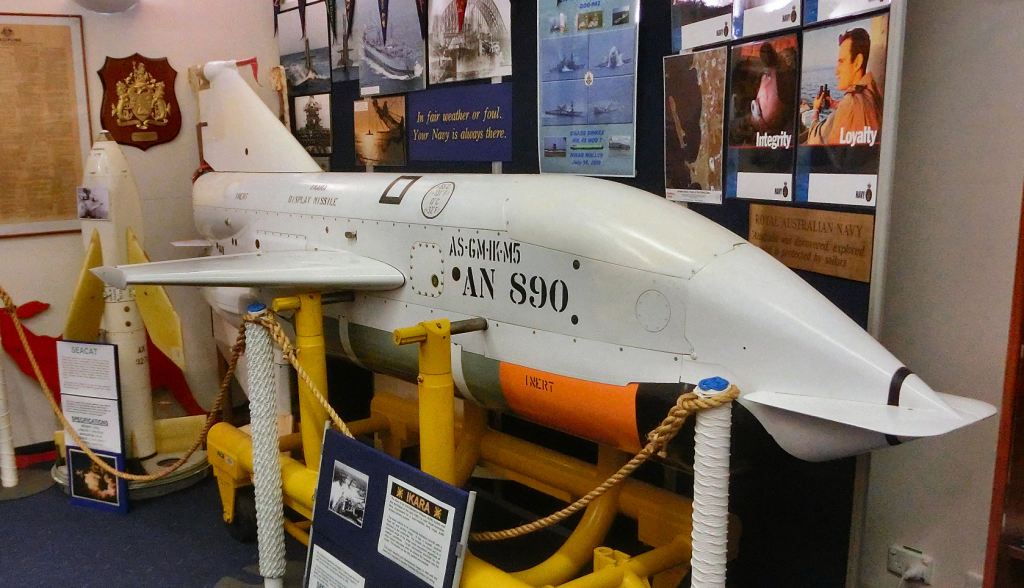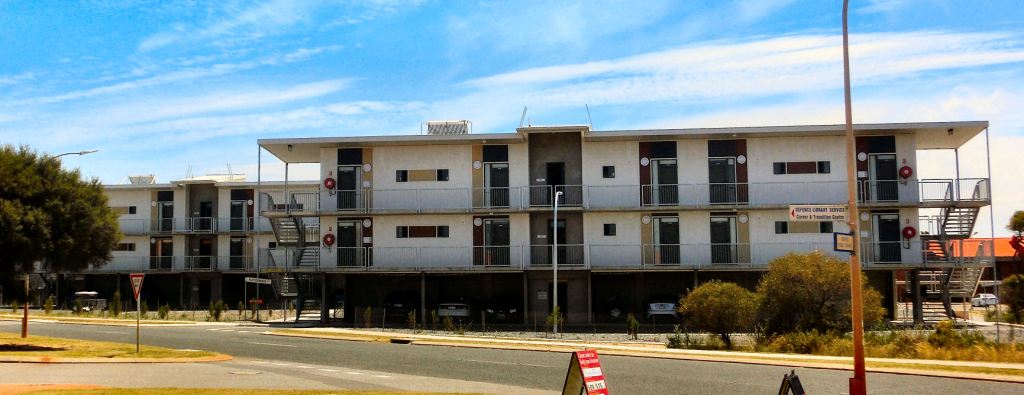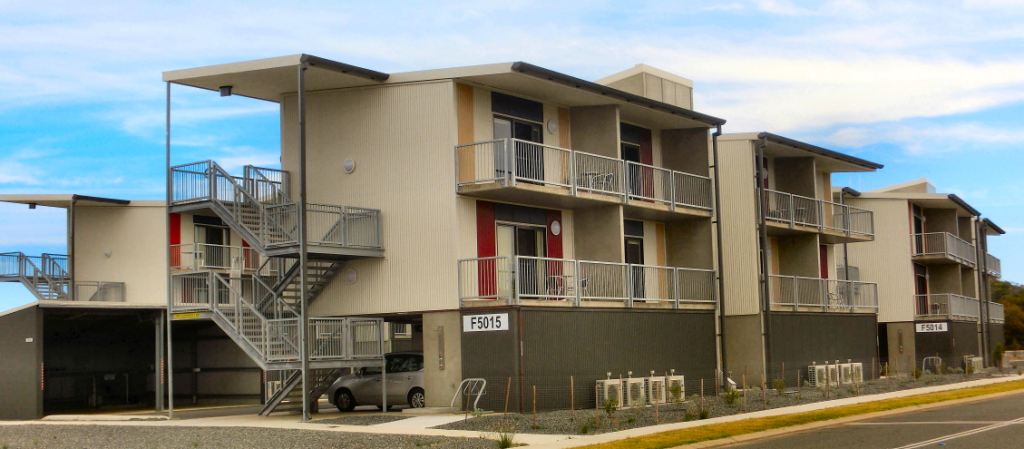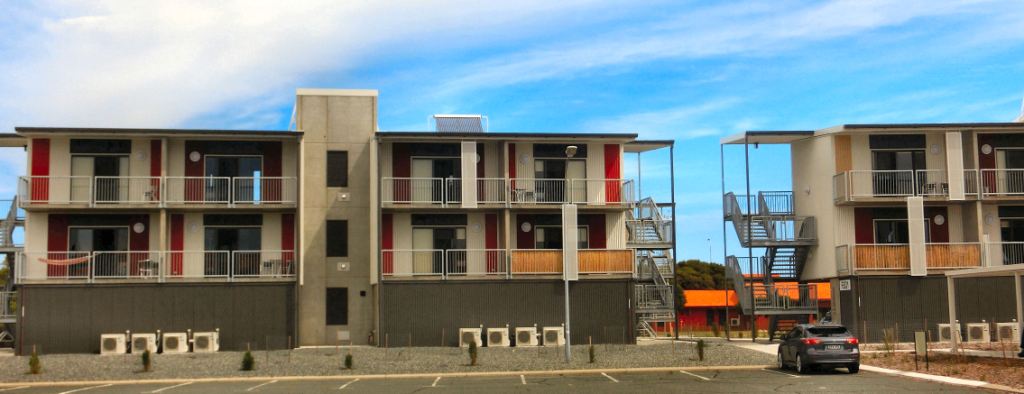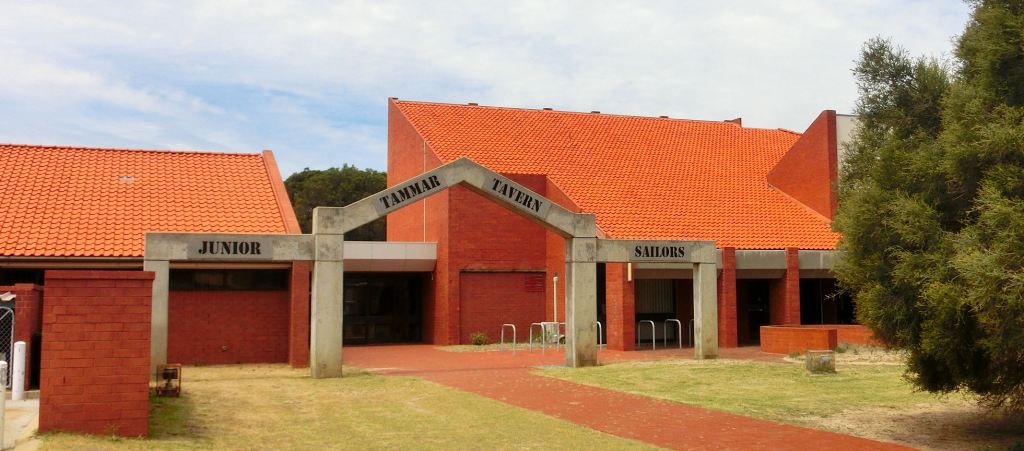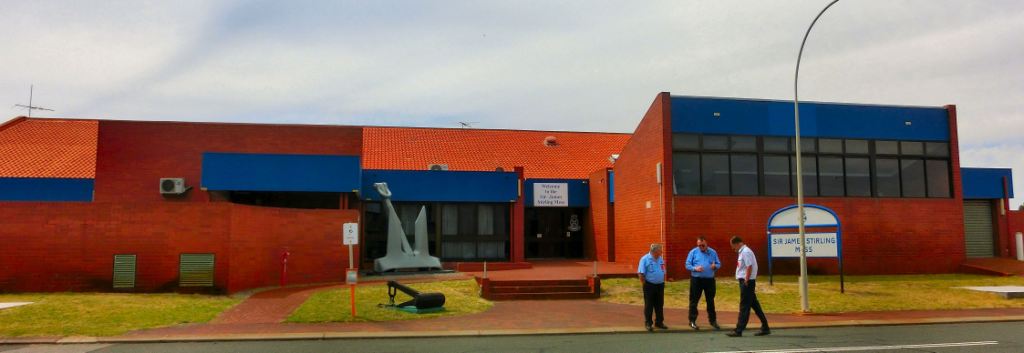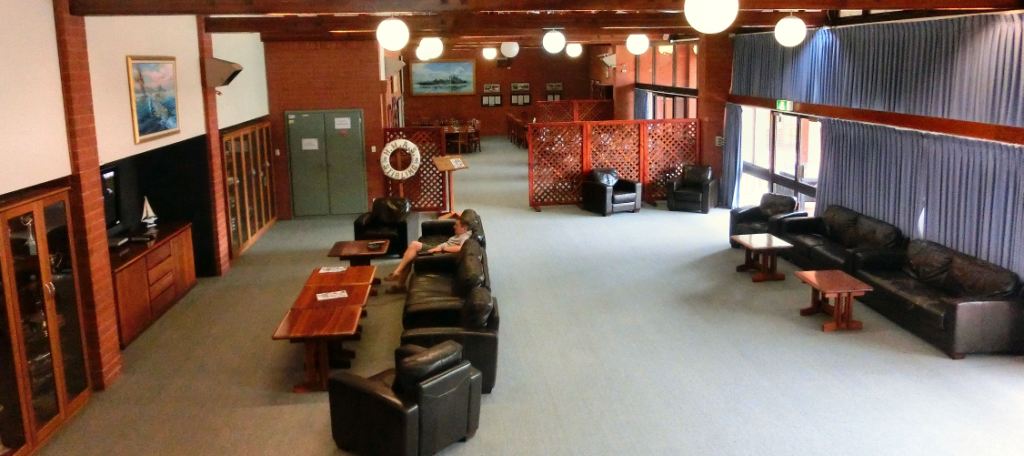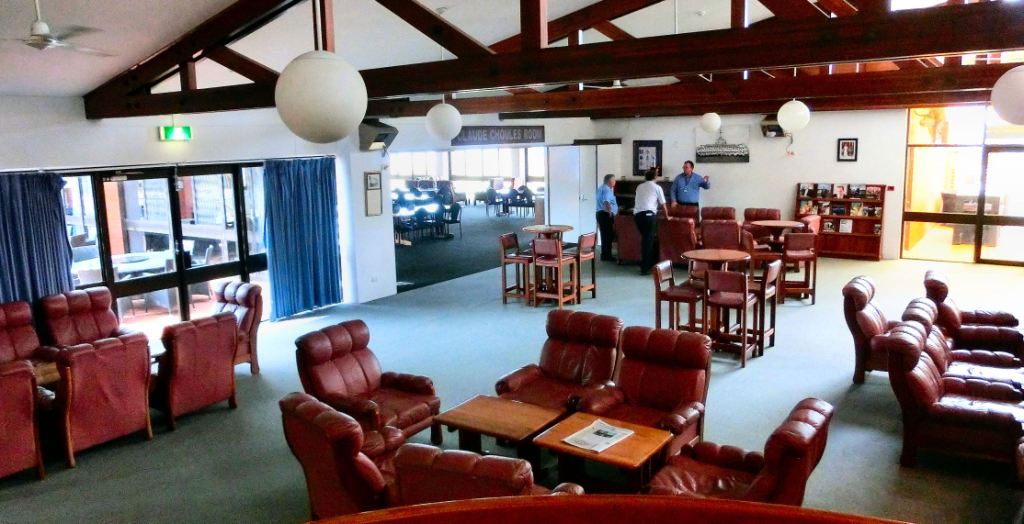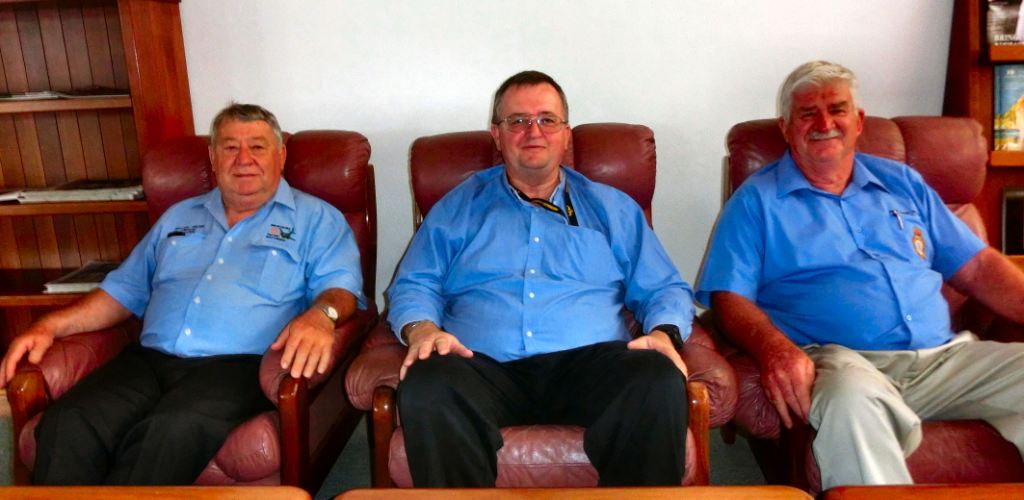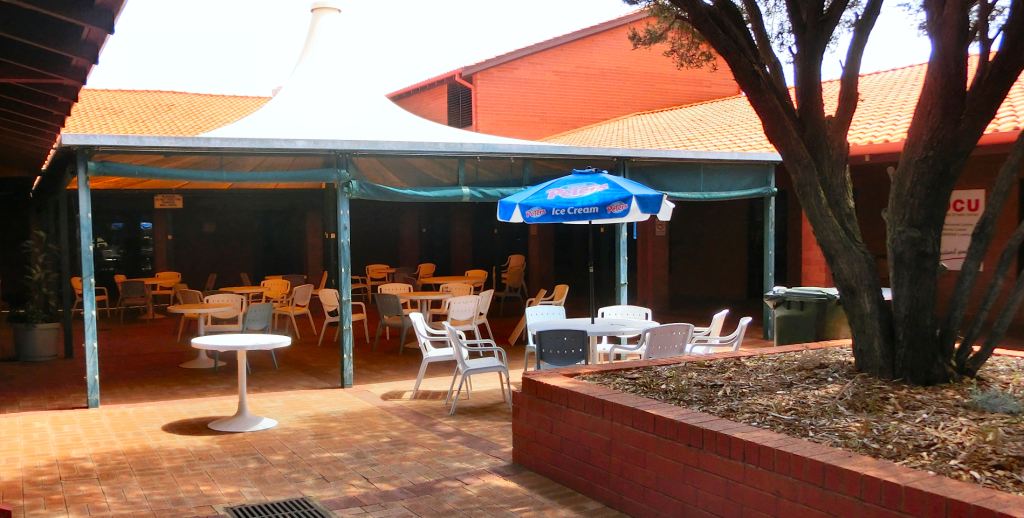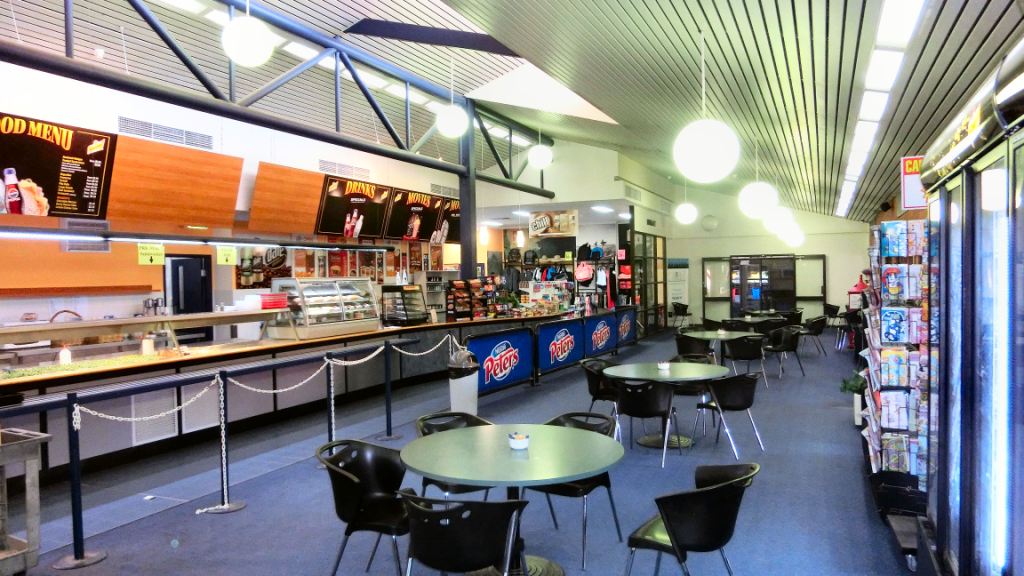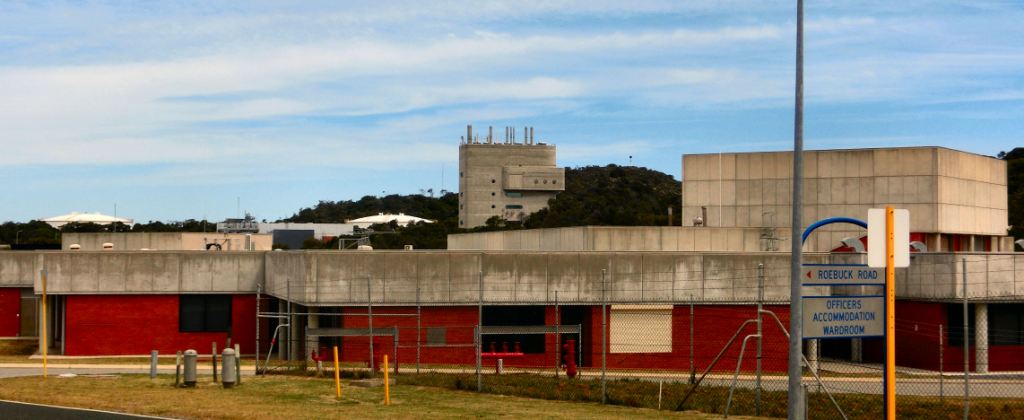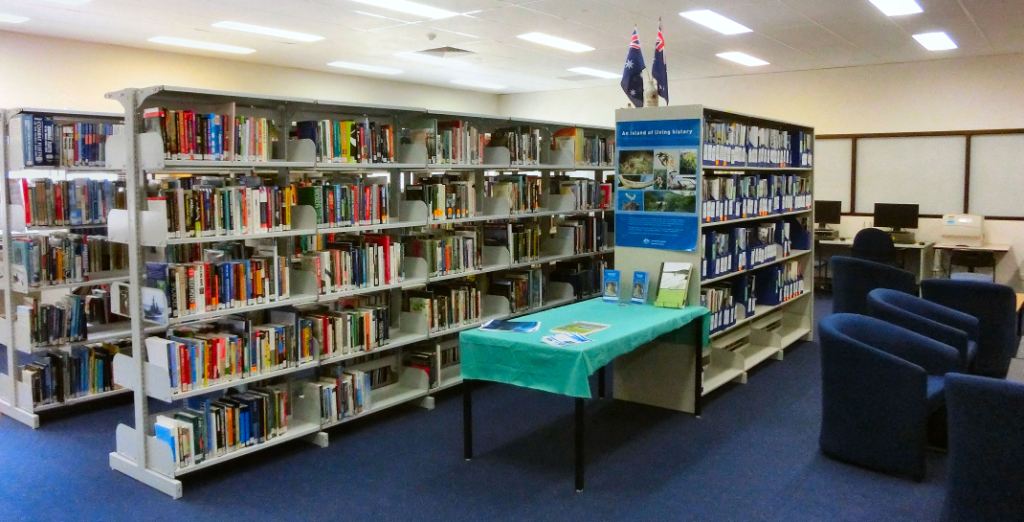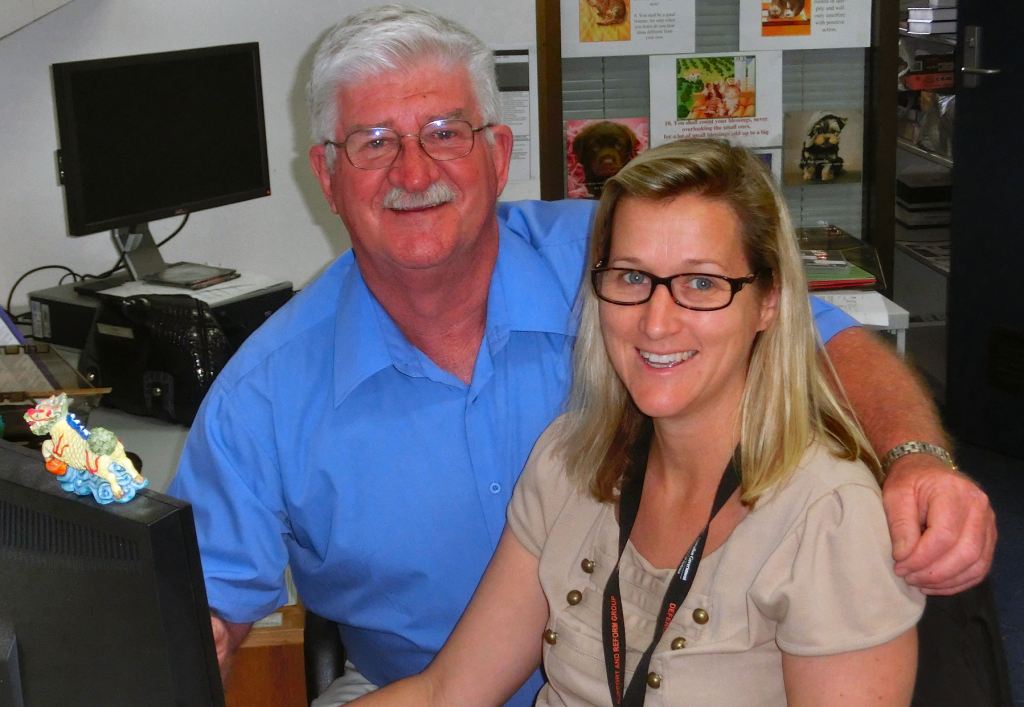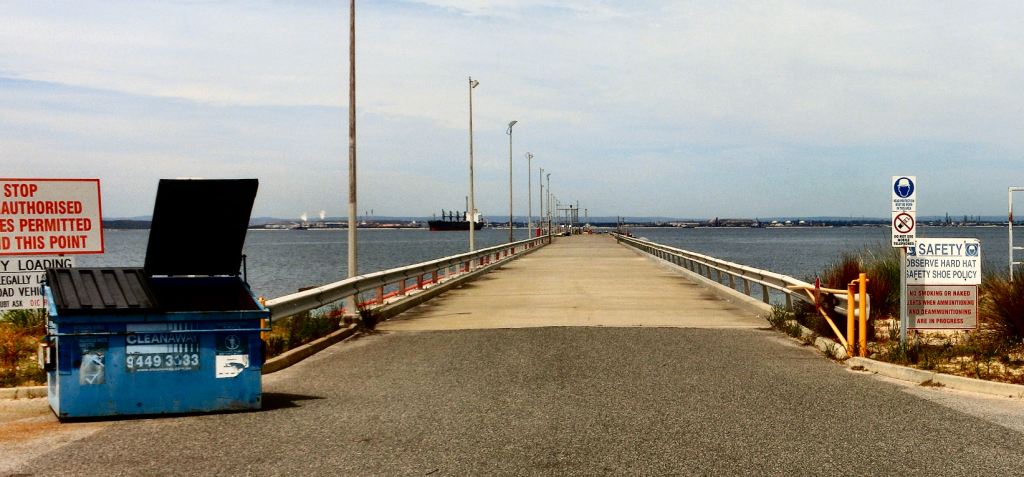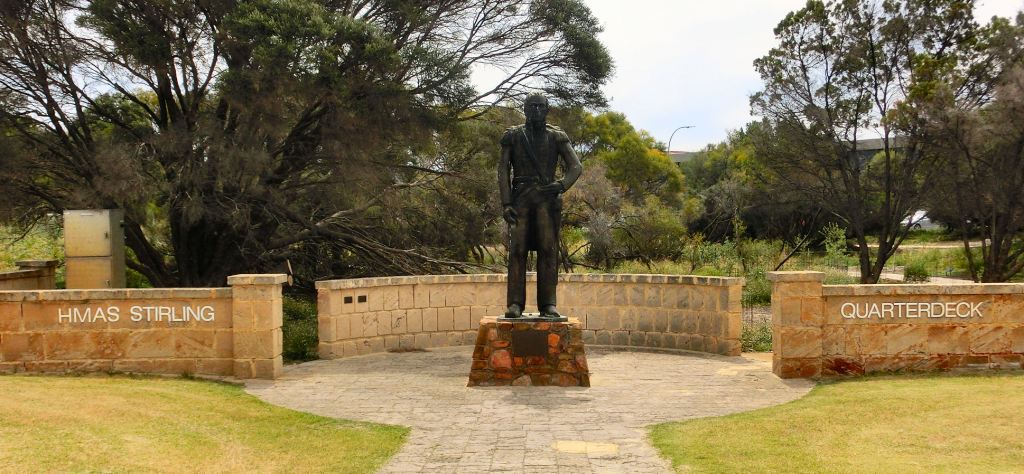|
|
|
|
Radschool Association Magazine - Vol 45 Page 15 |
|
|
Privacy Policy | Editorial Policy | Profit Policy | Join the Association | List of Members | Contact us | Index | Links |
|
|
Back Go to page: 1 2 3 4 5 6 7 8 9 10 11 12 13 14 15 16 17 18 19 20 Forward |
|
|
HMAS Stirling – WA. (You can click a lot of these pics for a bigger view.)
While in Perth late last year, we contacted Defence Public Relations to
get permission to have a look over and to report on the Navy’s HMAS
Stirling at Rockingham, which is about 50 klms s
While we were talking, Ted discovered that he had been in Vietnam, with 35 Sqn, with Gary's father Don. Don was a Sgt Framie and served with 35Sqn from Feb 1968 to Feb 1969. Small world??
The Base, which is the Navy’s largest, being home to over half the fleet, is named after Captain James Stirling, Royal Navy, the naval officer who landed on Garden Island in 1827 and returned in June, 1829 to found not only the first European settlement in Western Australia, but also the first free colony anywhere in Australia. Stirling's makeshift camp was set-up on the craggy rock outcrop on the eastern side of the island, which today is known as Cliff Head and is the site of a memorial. HMAS Stirling's crest is based on the Stirling family coat-of-arms.
Garden Island is about 4.5 klms from land and is reached by a two lane causeway and bridge.
|
|
|
Two thirds of the island is open to the public however, they are only allowed to get to the island by private boat and only during daylight hours. The causeway is accessible to pass holders only. There are three public picnic areas with free gas BBQs and toilet facilities and signs advise the public not to go bush as the Island is home to many angry tiger snakes. The Department of Conservation and Land Management Rangers patrol the coastline and provide assistance to visitors and ensure all rubbish is removed on departure.
Garden Island (WA) had been a Defence Base since 1915. During WW2, gun batteries were established as part of the Fremantle coastal defence network and Careening Bay, home of the current base, was home for the top secret Z force submarines. After the war, it was a popular holiday destination with many cottages and shacks and was serviced by small ferries. The planning for the current day HMAS Stirling began in 1969 after the tabling of a feasibility study into the use of Garden Island as a naval base. The causeway linking the island with the mainland was completed in June 1973, allowing the construction of Stirling's wharves and workshops, which began in 1973, and then the accommodation blocks which began in 1975. Stirling was formally commissioned on the 28th July, 1978.
Since its commissioning, the Base has expanded enormously within its existing boundaries and has seen buildings such as the Submarine Escape Training Facility constructed, one of only six in the world and the only one in the southern hemisphere. It is today the largest base in the RAN and is home to more than 2,300 service personnel, 600 Defence civilians and 500 long-term contractors.
Some 12 Fleet units including RAN’s Anzac Class frigates and Collins Class submarines are stationed here, along with some 70 units including the Submarine Training and Systems Centre (STSC), Australian Clearance Diving Team 4 (AUSCDT 4) and the Defence Communications Station (DEFCOMMSTA) Perth. The 314 metre long two-level: "Diamantina Pier" and the redeveloped small ships harbour have vastly increased the wharf and berthing space available to surface ships and submarines.
|
|
|
Diamantina Wharf - HMAS Stirling. |
|
|
HMAS Stirling's primary purpose is to provide operational and logistics support to the RAN’s ships, submarines and aircraft based in WA.
|
|
|
A lot of RAAF people wonder why the Navy has hooks on the back end of their aeroplanes, now we know – see HERE.
|
|
|
The flora and fauna on the Island have evolved in isolation from the mainland and remain from a more complex ecosystem when the island’s dunes were high points on a much wider coastal plain dating from the last ice age. The Navy are fully aware of the delicate eco-system on the island and have gone out of their way to protect it. Some 50,000 indigenous trees and scrubs were planted to stabilise the soil and enhance the wildlife's habitat.
|
|
|
L-R: Peter Gorta, Gary Booth and Ted McEvoy at Buchanan Bay, one of the public picnic/bar-b-q areas on the island. |
|
|
|
|
|
The view from Capt Stirling’s original camp site. |
|
|
Unfortunately there were no Collins Class submarines at home when we were there nor were we allowed on any of the ships, but Gary made us feel very welcome and we had a great look around. One thing about being in the Navy, you nearly always enjoy a water view from your work place.
The ship
in the above pic (copied at right), alongside the Diamantine Wharf, is
HMAS Sirius
Originally, the Navy planned to have a ship specially constructed for
the role but it was decided to instead purchase an under-construction
civilian tanker and modify her for military service, allowing it to
enter service three years before originally planned, at a saving of half
the acquisition project's cost. While HMAS Sirius is the first ship of
this name to serve as
She completed working up and passed her first Unit Readiness Evaluation in December 2006 however, although a flight deck was fitted towards the ‘back end’ for helicopter operations, she has yet to pass the stability test that will allow it. She can carry over 34,806 cz (cubic metres) of fuel including 5,486 cz (cubic metres) of aviation fuel for use by RAN helicopters. (1 cub metre = 1,000 litres). Sirius can replenish ships at sea by day and night and is capable of replenishing two ships at a time. She has transfer points for fuel, water and stores.
She is 192 metres in length, has a 32 metre beam and a draught of 11 metres. Fully loaded she weighs 46,700 tonnes, will race through the water at 16 knots and has a range of 16,000 nautical miles. She has a crew of 60 persons and is not completely helpless having 5 x 12.7mm machine guns.
|
|
|
I realised I was dyslexic when I went to a toga party dressed as a goat. |
|
|
|
|
|
One ship that can definitely take care of herself is the HMAS Perth (above). Perth is an Anzac class frigate and is the last of that class to be built. Tenix Defence Systems built 10 of the type, 8 of which are operated by the RAN and 2 by the Kiwis. She was commissioned into the RAN in 2006 and in 2007 became the first major warship of the Navy to be commanded by a woman, Commander Michele Miller.
This class originated from the Navy’s plans to replace their six River class destroyer escorts with a mid-capability patrol frigate. Australian shipbuilding was thought to be incapable of warship design, so the RAN decided to take a proven foreign design and modify it. Around the same time, the Kiwi Navy (RNZN) was looking to replace their four Leander class frigates but because of a deterioration in New Zealand-United States relations, the need to improve alliances with nearby nations, and the commonalities between the RAN and RNZN ships' the Kiwis decided to toss in with the RAN and order 2 ships with an option to take 2 more.
Tenders were called in 1986 and 12 different designs were received and by mid 1987 these were culled to a short list of 3 tenderers. In 1989, the Australian government announced that Melbourne-based shipbuilder AMECON (which later became Tenix Defence) would build the modified German MEKO 200 design.
Each frigate has a 3,600 tonne full load displacement, are 109 metres long at the waterline, have a beam of 14.8 metres and a full load draught of 4.35 metres. They are powered by a single, 30,172 HP General Electric LM2500-30 gas turbine and two 8,840 HP diesel engines driving the ship's two variable pitch propellers. Maximum speed is 27 knots and at a cruising speed of 18 knots she has a range of over 6,000 nautical miles.
Perth was
laid down at Williamstown, Victoria, in July 2003 and was launched on 20th
March 2004. She was commissioned into the Navy in August 2006. She was
assembled from six hull modules which were built at Williamstown (Vic)
and Newcastle (NSW) and six
During 2010 and 2011, Perth was used as the test-bed for a major upgrade to the Anzac class' ability to defend themselves from anti-ship missiles (ASMD), a feature that would make a lot of sailors feel a whole lot better.
Perth's CEAFAR phased array radars installed as part of the ASMD Project.
The ASMD will allow the Anzac frigates to defend themselves against saturation attacks from anti-ship missiles and to give close-in protection to amphibious ships. Key elements of the upgrade include:
The software is still under development and when completed will allow it to fire and control a greater number of Sea Sparrows (right) – the exact figures are classified, though the original intention of the project was to defend against saturation attacks. The Kiwis are looking at the system and are watching the upgrade with interest but at the moment have not proposed to extend the Anzac ASMD project to their two ships.
Perth is armed with an array of munitions, including:
She can also carry a Sikorsky S-70B-2 Seahawk helicopter.
Paddy texts his wife... "Mary, I’m just having one more pint with the lads. If I’m not home in 20 minutes, read this message again."
Another ship that was tied up while we were there was the Toowoomba.
|
|
|
HMAS Toowoomba is a sister ship to the Perth and was the seventh Anzac frigate to enter the Navy. She was laid down in 2002 and commissioned in 2005. In 2007, she was first deployed to the Persian Gulf as part of Operation Slipper then again during the second half of 2009 where she became the first Navy vessel to operate with the counter-piracy Combined Task Force. In September 2009, she responded to a call for assistance from the merchant vessel BBC Portugal and successfully prevented an act of high-seas piracy. A Japanese P-3 Orion aircraft and a naval helicopter from the German frigate Bremen provided surveillance support while Toowoomba closed in. A boarding party from Toowoomba confiscated several weapons from the attackers, including a rocket-propelled grenade launcher, six AK-47 assault rifles, and a G3 assault rifle, before the skiff was directed to leave the area.
Both ships carry a complement of about 170 sailors.
|
|
|
The world is a dangerous place; only yesterday I went into Myer and punched someone in the face. |
|
|
|
|
|
Stirling is also home to a well stocked and well maintained Museum – the Fleet Base West Naval Museum.
|
|
|
The
museum chronicles the development of the base from its early beginnings
up until today, with a replicas of HMAS Perth (above - launched 1963,
decommissioned 1999) and the Diamantina on display. The Diamantina,
after which the main pier was named, was a River class frigate that was
constructed in the mid-1940s. She was active from 1945 until
She was the last World War II-era frigate to leave the Navy and now rests in an old dry dock at the Queensland Maritime Museum at South Bank in Brisbane as a museum ship. She was laid down in April 1943 at Walkers Limited in Maryborough, Queensland and was launched on 6 April 1944. She has the distinction of carrying Lieutenant General Kanda and Vice Admiral Baron Samejima, officers of the Japanese Imperial High Command, to the surrender of Torokina on 8 September 1945. She was also involved in the surrenders of Nauru on 13 September and Ocean Island on 1 October; both ceremonies conducted on her quarterdeck.
In 1959, she was recommissioned as an oceanographic survey ship and based in Fremantle, WA. She performed the first survey of the Montebello Islands following the British atomic test, Operation Hurricane and later that year carried out the first survey of the waters around Christmas Island. During this period, her most notable achievement was the discovery of the deepest known part of the Indian Ocean on 7 February 1960, which was named Diamantina Deep after the ship. It is located about 1,125 km west-southwest of Perth and has a maximum depth of 7,299 m (23,947 ft). The Diamantina was finally retired in 1980.
Another interesting exhibit in the museum is the Ikara missile.
|
|
|
The Ikara missile was an Australian designed, ship-launched anti-submarine missile, named after an Australian Aboriginal word for "throwing stick". It launched an acoustic torpedo to a range of 10 nautical miles, allowing fast-reaction attacks against submarines at ranges that would otherwise require the launching ship to close for attack, placing itself at risk. Also, by flying to the general area of the target, the engagement time was dramatically reduced, giving the target less time to respond.
When an enemy submarine was spotted, the Ikara would be launched, fly to the general area of the submarine, drop its torpedo then fly on and splash down some distance away. They were used on all of the Navy’s River class frigates/destroyer escorts and Perth class guided missile destroyers from the 1960’s right up until the 1990’s.
When not at sea, the base is home to a large number of sailors and the Navy has not skimped on their accommodation.
|
|
|
|
|
|
|
|
|
There are numerous all air-conditioned motel-type state-of-the-art accommodation blocks on the base and the sailors and sailorettes make good use of them, more so than what we’ve seen on RAAF or Army bases to which we’ve been recently.
And with all those people living on the base, there was obviously a need for facilities which Navy has also provided.
|
|
|
The current Tammar Tavern is the Navy’s equivalent to a RAAF Airman’s Boozer only in this case, you would be hard pressed to find better facilities. About 12 months ago the old “Mess” underwent some major improvements, moved to a new location and when it reopened in January 2013 provided wonderful facilities for the sailors and sailorettes and their families.
|
|
|
Amenities include a 160 inch projector screen, new furniture and modernised bar equipment, and an alcohol free room which gives members and their families a space to enjoy the benefits of the mess in an alcohol free environment. Like the main section of the Tammar Tavern, the alcohol free space features a pool table, an entertainment system, a lounge area and gaming equipment.
And it’s not only the junior ranks that are looked after, the Navy has combined what we’d call the Sergeants and Officers messes into one which at Stirling is called the “Sir James Stirling Mess”
|
|
|
We were shown through the Messes early in the afternoon, when everyone was at work, so we had the run of the James Stirling Mess all to ourselves and from what we could see, the senior NCO’s and Officers don’t want for too much either.
|
|
|
|
|
|
Then after all that touring and inspecting, it was time to take a breather before pushing on to other areas.
|
|
|
L-R: Ted McEvoy, Gary Booth, Trev Benneworth. |
|
|
Similar to other ADF establishments, should the sailors and sailorettes on Stirling wish to socialise outside their Mess hours, they also have a well stocked canteen in which to do it.
|
|
|
|
|
|
As there were no Mess facilities open during the hours we were there, we also enjoyed a light meal and a refreshing glass in the canteen.
Then after we had been satisfyingly fed and watered, it was time to move on again.
|
|
|
One area of which Stirling is rightly proud is the Submarine Escape and Rescue Centre (SETF) which was officially opened on the 22 April, 1988. Prior to this, Navy submariners were trained at the Submarine Escape Training Tower at HMS Dolphin in Gosport, England. The SETF is the only submarine escape training system in the southern hemisphere, and one of only six operational worldwide.
Unfortunately, the SETF had not enjoyed plain sailing over recent years. Originally manned solely by the Navy, the regular posting of instructors caused a knowledge drain so Navy was forced to contract civilian diving companies to provide the training. Management of the facility was contracted to Australian Submarine Corporation (ASC), but in January 2009, it was reported that the facility had sat unused for 18 months because of a contract dispute between ASC and the RAN. (Does that sound like your ADF?? - tb). While all this was going on, Navy personnel were sent to Canada for escape training, then in March 2011, the peace pipe was smoked by all parties, and the SETF reopened.
Escape training is generally a five-day course. The course culminates in a free ascent in the facility's 22-metre vertical freshwater tank, with only one attempt permitted. New submarine trainees have to pass the course before they can be posted to a submarine, and submariners must requalify every three years. Pressurisation of the escape tower takes less than 20 seconds to reach a maximum escape depth of 180 metres in order to reduce the risk of decompression illness. In 1995, training was changed to require two buoyant ascents from 9 metres wearing the submarine escape jerkin and two hooded ascents in the tower from 22 metres to reduce the risk of pulmonary barotrauma.
Prior to 1995, candidates were required to perform two buoyant ascents from 9 metres, one buoyant ascent from 22 metres wearing the submarine escape jerkin, one hooded ascent in the compartment from 22 metres, and two hooded ascents in the tower from 22 metres. (All scary stuff and I’m glad it’s not me – tb).
Another facility that Navy provided for people based on Stirling and to other ADF personnel in the area is a lending library. All books, CD’s, DVD’s etc held in the library are catalogued on line and ADF personnel can log on and select an item and have it sent to them.
|
|
|
|
|
|
The lovely Leanne Thorpe usually handles the request and makes sure all items requested are dispatched ASAP.
Then, unfortunately, it was time to leave. On the way Gary took us further up the eastern shore of the Island and showed us where the munitions are loaded on to the ships. This is obviously far away from the living quarters and working areas in order to ensure the safety of sailors and sailorettes.
|
|
|
|
|
|
Then it was past the statue of Captain Stirling, onto the causeway and back onto the mainland. We must thank Gary Booth who gave us his time to show us around, thanks to Defence Media in Canberra for arranging it and thanks to Peter Gorta for playing duty driver for the day.
|
|
|
I saw that show, 50 Things To Do Before You Die. I would have thought the obvious one was "Shout For Help". |
|
|
|
|
|
Back Go to page: 1 2 3 4 5 6 7 8 9 10 11 12 13 14 15 16 17 18 19 20 Forward | |
|
|
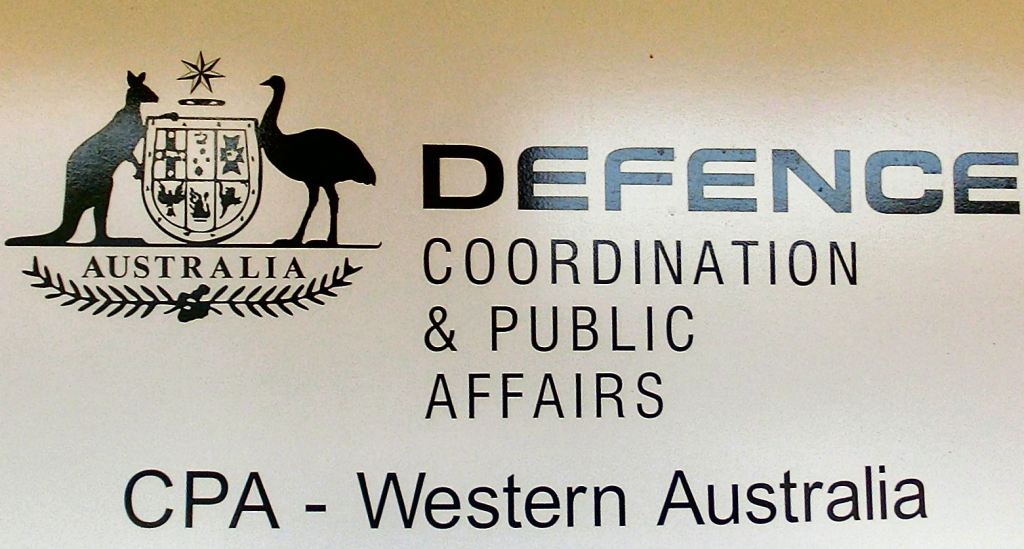 outh
of Perth. They were only too happy to oblige and Gary Booth, who
organised our tour of
outh
of Perth. They were only too happy to oblige and Gary Booth, who
organised our tour of 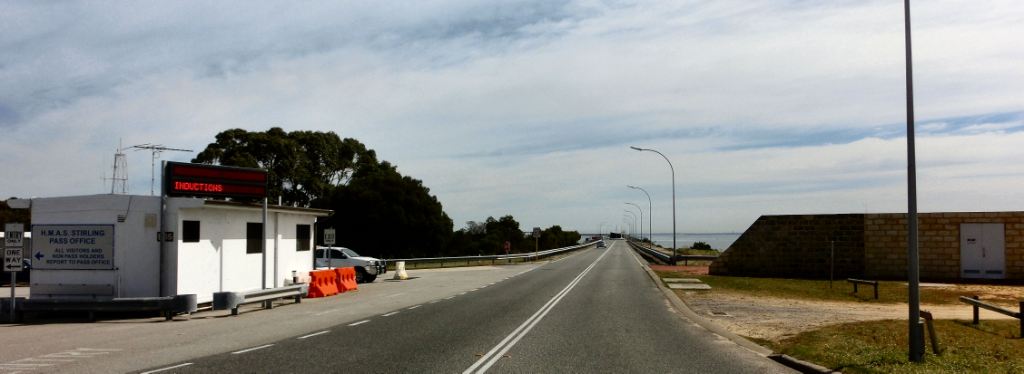
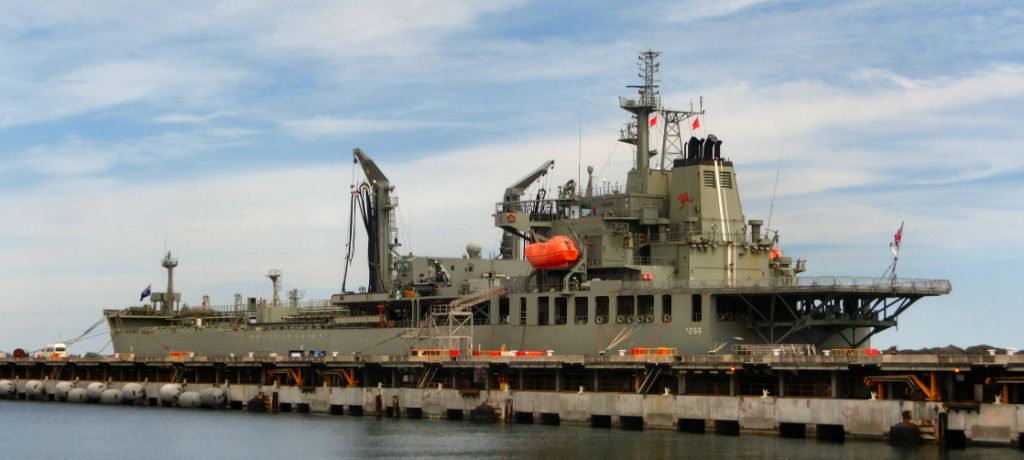
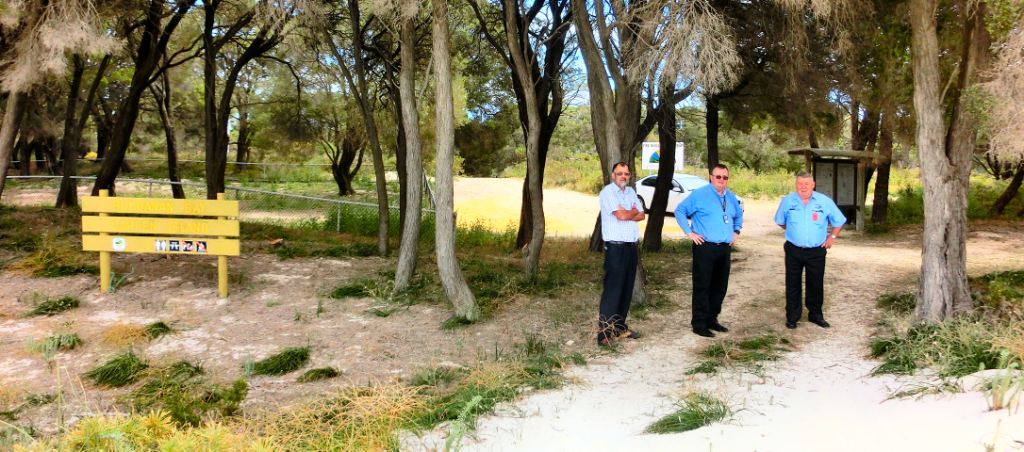
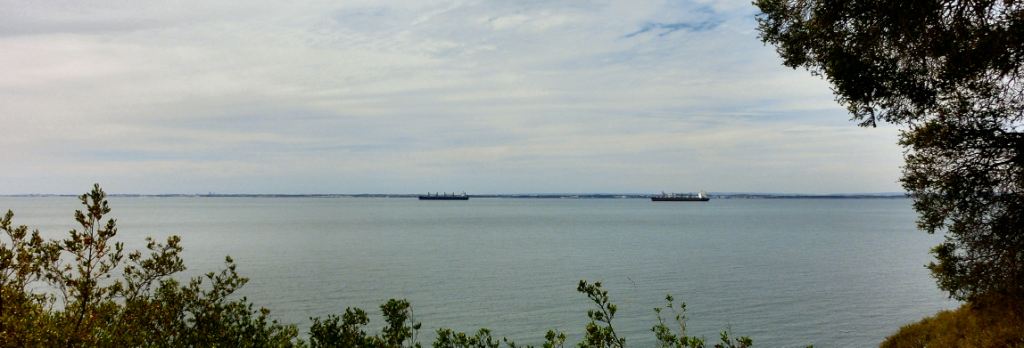
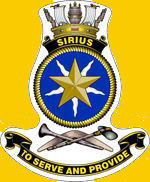 part of the RAN, she is named after HMS Sirius, the flagship of the
First Fleet of British convicts sent to Australia in 1788.
part of the RAN, she is named after HMS Sirius, the flagship of the
First Fleet of British convicts sent to Australia in 1788.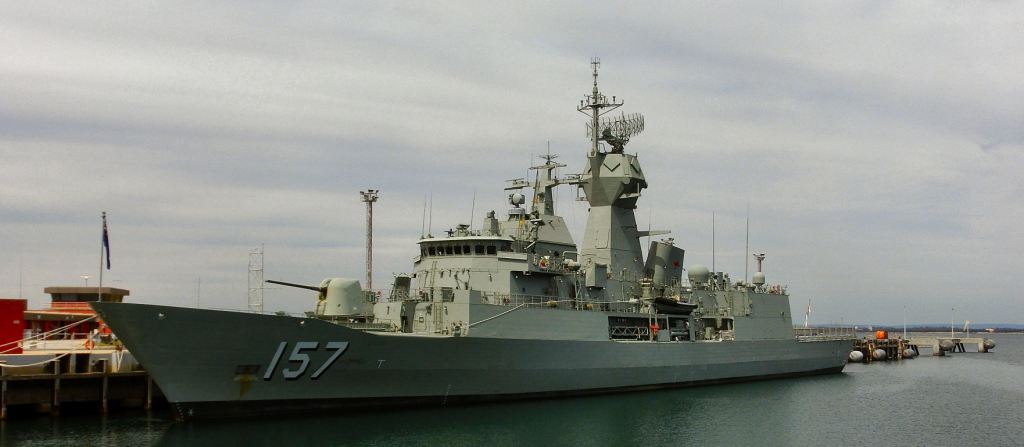
 superstructure modules which were made in Whangarei, New Zealand.
superstructure modules which were made in Whangarei, New Zealand. 